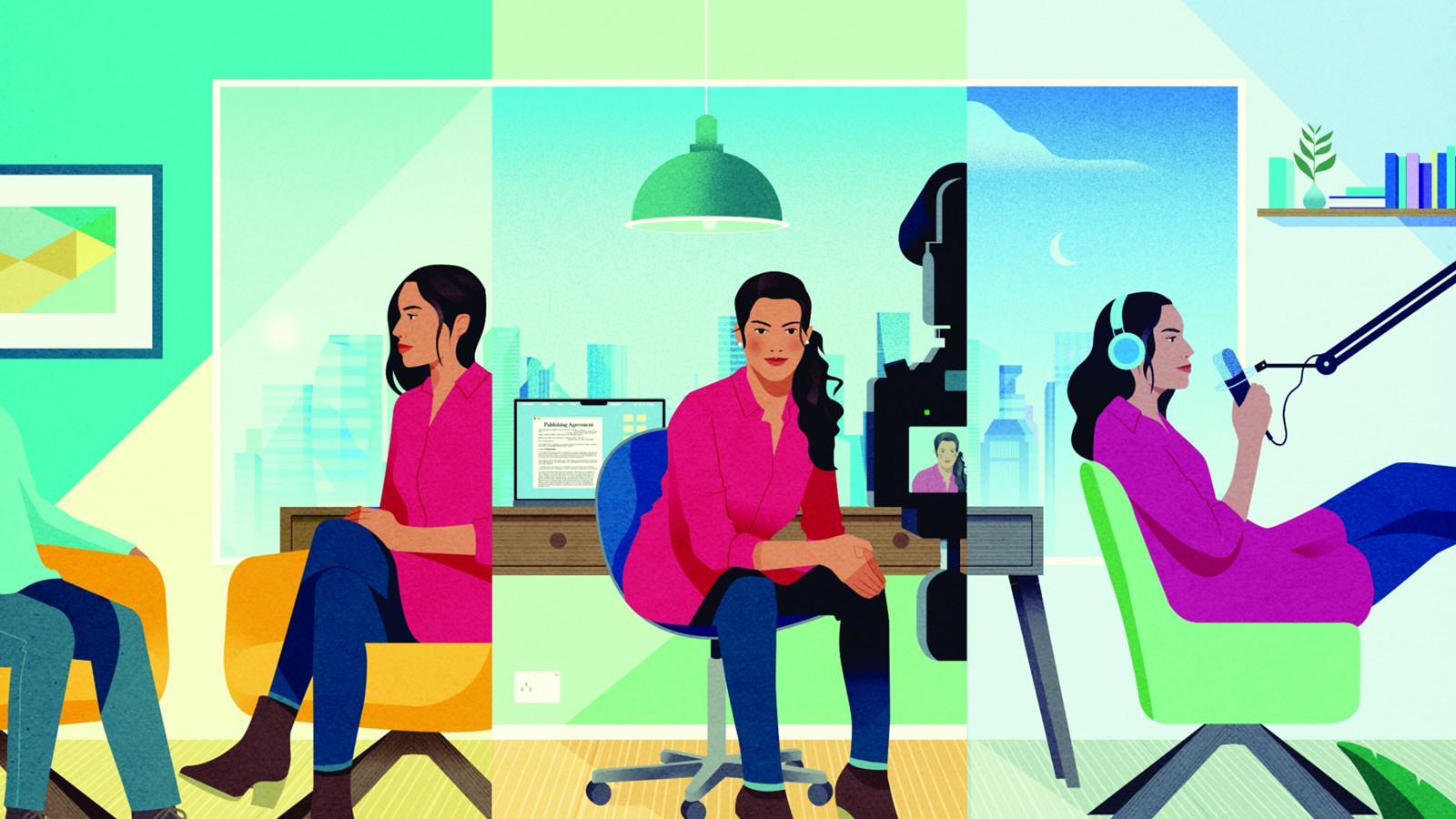
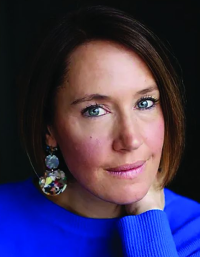
Helen Kewell’s experience post-qualification is a familiar one. Keen to build a private practice she threw herself into marketing and promoting herself, and went out of her way to reach as many clients as possible, renting therapy rooms in two nearby counties and driving miles to see clients in their own home (she specialised in working with older people). Within a year she had a full practice with a waiting list – and was on the way to burnout.
There is a truth about our profession that is rarely spoken about – few of us have full-time practices because seeing clients back to back for eight hours a day, five days a week is unsustainable. And not every therapist can rely on consistent client demand to fill full-time hours. Only 40.3% of respondents to the latest published BACP Workplace Mapping Survey1 said they could earn a living solely from their counselling work – 43.91% said they couldn’t earn a living from counselling alone. Some 71.8% said they earned an annual income of £30,000 or less – 37% of those earned £12,500 or less.
While it’s a myth that there is an official ‘limit’ set by BACP to the number of clients we should see in a week, in a recent discussion on the subject in a therapist Facebook group the consensus was that around 15-20 was the maximum number that most practitioners could sustain on a long-term basis. The Workplace Mapping Survey found that the average number of paid client hours was lower than this at 12.48.1
Kewell says it came as a complete surprise that working full time in private practice was ‘richly rewarding but at the same time repetitive and slightly overwhelming in a way I hadn’t expected’. After a break and much personal reflection and work in supervision, she came to a realisation shared by a growing number of practitioners – the key to earning a living from the profession that we love while also preventing burnout is to construct a portfolio career, by combining client sessions with other contrasting ways of working (in Kewell’s case, management consultancy work and writing). Supervision and training are the most obvious and perhaps easily accessible ‘portfolio additions’ for experienced practitioners, but we are also seeing another trend, that of therapists capitalising on the digital and media world to turn their therapeutic skills and experience into other income streams.
There is another, less talked about driver behind the rise in portfolio working and a question that we rarely voice out loud – is a career that is limited to seeing clients fulfilling enough? The practitioners interviewed for this feature are all committed to their client work but also keen to develop their business, entrepreneurial and creative sides – and as their experiences have shown, post-pandemic, there are more opportunities to do this than ever before.
Next in this issue
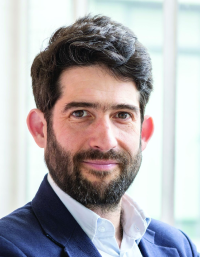
Multidimensional
Therapy is often a second career and, for some, a portfolio career is a natural extension of an already established way of working. Michael Toller had a career in publishing but was also a musician and involved in staging events in the music industry before training first as a coach and then as a psychotherapist, and as much as he was passionate about his new professions, he found that the entrepreneurial part of him did not switch off. While applying for membership of the British Psychoanalytic Council, which requires evidence of a clinical will before membership can be accepted, he started thinking that there must be a more efficient way to create, update and securely store client details to be accessed by a nominated third party in case of emergency. The solution was launching ClinicalWill.app in collaboration with a tech designer. ‘In my experience, the drive to be entrepreneurial is very rarely just about wanting to make money – it’s usually about engaging your creativity, generating ideas and seeing them through, and bringing them into your work,’ says Toller. ‘For me, it was rooted in a belief in ethical working, and in helping others work ethically. I’d never done anything like this before so it was about learning by overcoming challenges – I started the business during the pandemic, which might seem like the worst time, but on reflection, as it brought me and so many others so abruptly into the digital sphere, perhaps it was the perfect time.’
Managing a digital business and working therapeutically with clients require very different frames of mind, and the key for making that work for Toller and many other portfolio practitioners is careful structuring of the working week. Toller devotes around two-and-a-half days a week to client work, when he is in ‘therapist and coach mode’. The rest of the time he is in ‘entrepreneurial mode’, working on promoting and further developing ClinicalWill.app. ‘It works well most of the time as long as you are prepared to tolerate a level of uncertainty and respond with flexibility – if something needs sorting out urgently it might mean starting work again in the evening when I’ve finished my client work,’ he says. ‘As therapists we are already comfortable with a certain level of uncertainty, because you never know what a client’s going to bring or how the work is going to turn out. But there is a limit to the uncertainty also, as there is a set structure to when and where you are going to meet, and how long the session will last. With something like a digital product you never know what issues might crop up and how long they may take to fix, and you have to be OK with that. But maybe I got quite used to that running the music events business because, again, you never knew what might crop up and you just had to deal with it – I think I enjoyed that challenge and perhaps needed a way of keeping it in my working life.’


Career progression
Another motivation for opting for a portfolio career is that as well as being emotionally unsustainable, full-time client work is also too one-dimensional for some practitioners. For Rima Sidhpara and many others a portfolio career is also about enabling career progression. Sidhpara set up in private practice after six years of post-qualification volunteering for a counselling service while also working in a paid admin role. For her, a portfolio career is an answer to a recurring question – ‘What’s next?’ ‘It started when I took on sole use of two rooms in a building called Rutland House with a therapist friend, Jenny Collard, and Rutland House Counselling and Psychotherapy (www.rhcp.org.uk) was born,’ she says. ‘To make it financially viable, we sublet the rooms when we weren’t working to other therapists. Soon we started thinking about offering placements to trainees to help reduce our waiting list and also offer low-cost sessions. Then we took a leap and took out a lease on a whole building and expanded into the space, taking on therapists to work for us so we could offer a range of therapies and also pitch for contract work with business and social services.’
Sidhpara now thinks of herself as a businesswoman as well as a therapist. She still has a caseload of around 13 clients, including running a specialist dialectical behavioural therapy group, but she thrives on the problem-solving aspect of running a business and brainstorming ideas with her business partner. ‘I went into therapy pretty much straight away after graduating with my psychology degree so I was always going to approach it as a career and think, how can I develop this?’ she says.
Sidhpara’s and Collard’s willingness to try new ideas means the service has been consistently profitable, so much so that they recently bought their own building. ‘In my culture there’s an expectation that you’re business-minded and try to make a decent living from whatever you do. And for me that meant looking beyond simply seeing clients,’ she says. ‘I’d like to see a shift in the prevailing “there’s not enough work, we are all poor” narrative in our profession. I know in different parts of the country, there’ll be different challenges, but throughout the UK the demand for mental health support is massive. Yes, it’s the quality of the actual therapy that matters most but isn’t it also OK if the business side excites you, if being successful excites you, and pushes you to think, what else can I offer, and how can I grow?’
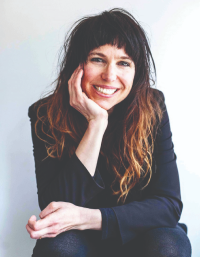
Post-COVID creativity
As well as increasing demand for mental health support, the pandemic has also created more opportunities to work digitally, and that has shaped the portfolio careers of many practitioners, including Jennifer Cox. After working for the NHS and in specialist services for several years, Cox moved into private practice to fit her work around family life. During the pandemic, her work ‘exploded’. ‘When people worked in an office nine to five it restricted the bulk of my private practice to early mornings and evenings. But with homeworking and more employer flexibility, clients could come during the day, especially if they were online,’ she says. ‘Suddenly my client hours were 40 hours a week. It was just not sustainable.’
She soon began to notice a common theme in her female clients – anger. ‘They found themselves in a situation in the pandemic where they were working from home like their partners but also taking responsibility for the majority of the domestic work and the homeschooling. These were women who may have had a great education, had done well and got the promotions at work. But they’re still the ones taking the phone calls from the school, booking the dentist appointments, packing the lunches, taking ageing parents to medical appointments. What I was hearing again and again, was “I can’t do it, I’m snapping, I’m at breaking point”. And these women are coming in with all these different symptoms but actually they are all furious.’ Cox took a leap by reducing her client working days to make space to launch the Women Are Mad project (www.womenaremad.org) and podcast (on Apple and most podcast platforms) to explore the theme of women’s anger. For Cox it was driven by an ethical sense that she had recognised this need, and had the means to help – she couldn’t not act. ‘I knew the issue was widespread but that not everyone could afford to have therapy,’ she says. ‘So I wanted to find a way to get this information out there.’ Part of her offering was free online processing groups so women could share their experiences.
Before long this initial investment in unpaid work opened up opportunities, including a book contract – Women are Angry will be published by Lagom in June. ‘My portfolio practice is now working well but I can’t say it was the result of planning,’ she says. ‘I just always want to stay curious and respond to where I’m needed so I put my energy into things that align with my ethos and that I think are really important, and hope that out of that a path will form.’
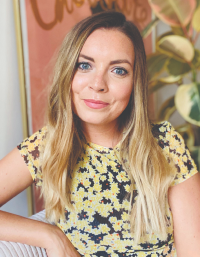
Psychoeducation
An initiative to offer free psychoeducation also turned into an income stream for Abby Rawlinson. She says she has always kept her clinical work to three days a week – ‘my personal limit for effective working’ – relying on contacts from her previous career in media for work on the other two days. But during the pandemic she started sharing ‘bits of psychoeducation’ on social media because she’d seen other therapists doing it and realised there was a demand for support from the public. ‘I have always believed in empowering clients by demystifying therapy and saying, this is what you need to know about how your brain works. I don’t think you should have to pay for expensive therapy in order to understand some of the quite basic psychological concepts that are really beneficial. It seemed like posting on Instagram (@therapywithabby) could be a way of reaching and helping more people. And it just really took off and grew organically until I had a big following. I hadn’t really engaged with Instagram much before but I taught myself to use a software package called Canva that creates posts for you and learned as I went along. In terms of content, I was very much just led by the audience and I kept it simple by sticking to Instagram – I didn’t try TikTok as it wasn’t a platform I’d ever used. I also like the feel of Instagram – the community of therapists who use it are so supportive of each other. I kept the posts relevant to my niche and the kinds of issues my clients were bringing, such as high-functioning anxiety, burnout and imposter syndrome, or to issues I had worked through personally, to ensure there was always an authenticity to the posts.’
Rawlinson’s non-clinical days soon became dedicated to managing her Instagram account, which had started to generate income through brand sponsorship opportunities and sales of a downloadable course she recorded. But she was still producing a lot of free content: ‘I had started offering free downloadable PDFs so I could get across more information than I could put in the posts, and a newsletter that was like a mini magazine with links to helpful articles and other resources,’ she says. That meant a growing following and database, and she soon began to get approaches for book deals. Although she says she had ‘never seen myself as a writer’, she was taken on by a literary agent who negotiated a book deal with Penguin. Her book, Reclaiming You, came out earlier this year. She signed the book deal on the same day she found out she was pregnant so had a nine-month deadline to finish the book. She is still on maternity leave but imagines reducing her client work to two days once she returns, to manage the publicity required to promote the book. ‘I will always do client work as I love it, but I thrive best when I have different strands to my work,’ she says. ‘It is also financially reassuring to have different revenue streams.’
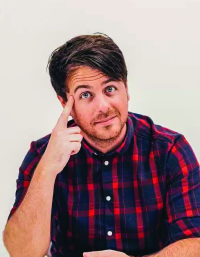
Self-publishing
A desire to psychoeducate and help large numbers of people was also the motivation behind several career moves that have resulted in a successful portfolio career for Joshua Fletcher. He self-published his first book, Anxiety: panicking about panic, before he trained as a therapist while working as a teaching assistant. ‘I developed an anxiety disorder in my early 20s helping to care for my younger brother, Harry, before he died. I did a lot of research to try to understand what was going on for me and how to manage it, and I wanted to share that. It was about explaining what is happening in your brain and nervous system when you suffer from anxiety,’ he says. The book did surprisingly well and encouraged Fletcher to take a leap, leave his teaching assistant job, take a coaching qualification and offer coaching for anxiety. He soon felt limited by what he could offer and decided to retrain as a therapist, taking a master’s in counselling at Keele University followed by a postgraduate certificate in CBT at Salford University.
Like Rawlinson, he started using Instagram during the pandemic, posting about therapy as well as anxiety. ‘I’d have people responding to my posts saying, “Wow, I’ve been in therapy for years and no one has ever explained that to me”. I wanted to bring more people to the world of counselling, and debunk some of the myths. I grew up in a working-class town in Lancashire, and I thought of all my mates – none of them had been to therapy, even though I knew they’d had times when it could have helped them.’ His growing profile posting as @AnxietyJosh led to a collaboration with successful Instagrammer Dean Stott (@DLCAnxiety), to self-publish a second book, Untangle Your Anxiety.
He then started thinking about a third book: ‘I just thought, what can I write that would make people think counselling is more appealing? I thought “stealth help” is the way to go – aim to entertain while you educate.’ His speculative pitch got him taken on by a high-profile agent who negotiated a book deal – And How Does That Make You Feel? is published this month by Orion. Fletcher kept his client list to no more than four or five to give himself time to write, and now has one client day a week. The rest is spent on public speaking engagements or on social media posts and other promotional work for the book, such as appearing on podcasts or talking to the media. He also has a podcast, Disordered: anxiety help, with co-host Drew Linsalata. ‘I will never give up the client work as I’m passionate about it, but I don’t think I could ever have done it full time. I love therapy but, to me, if your whole identity is about being a therapist you will resent it,’ he says. ‘It’s the law of diminishing returns – if everything is therapy your brain will just become desensitised to it. I like to close my therapy door after I’ve done my therapy day and then go home and embrace a life that is not that. I wouldn’t want a therapist who didn’t have a life outside therapy.’
But Wednesdays and Fridays, my therapist days, I feel like I become a different person. There is a ritual about those days, in changing my home office into a therapy room, moving the chairs so they face each other, getting water ready, lighting a candle, tidying my desk – I can feel myself returning to my counselling persona, calm and “in the zone”. I love that my focus is just on the person in front of me rather than answering emails or taking calls. But I think the reason I am happy to completely embody this space on my client days is that it’s limited to two days a week. I know that works for me.’
